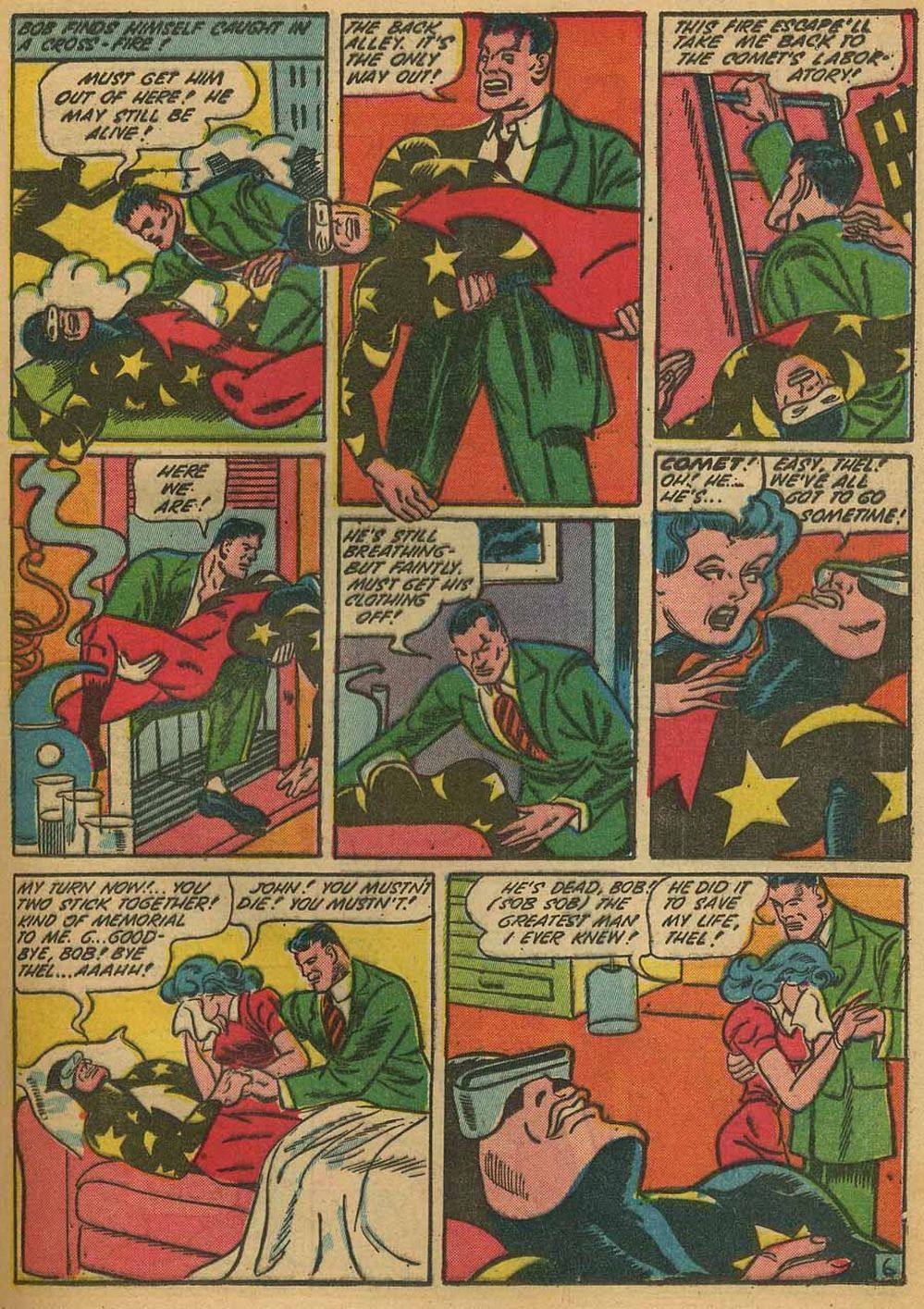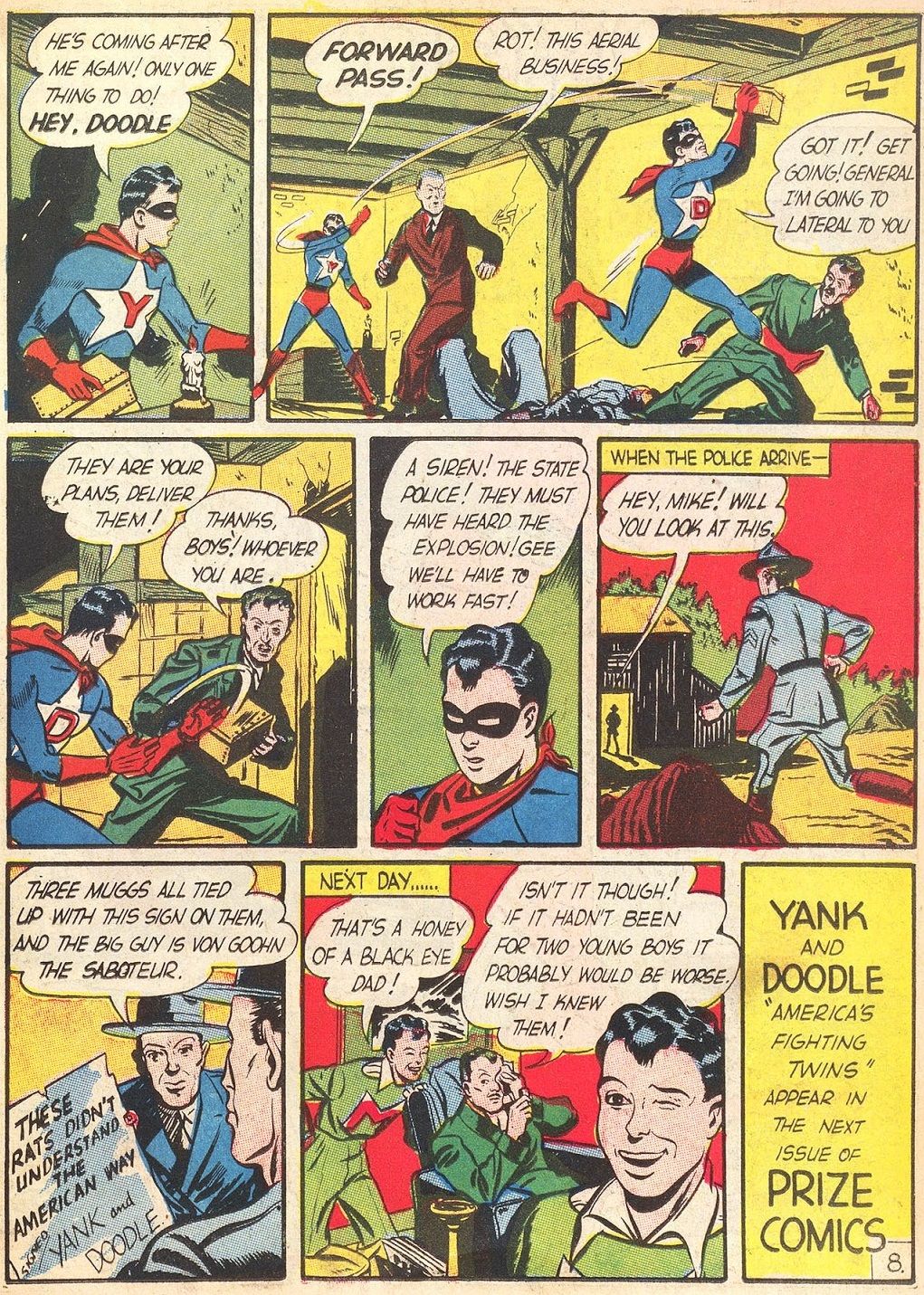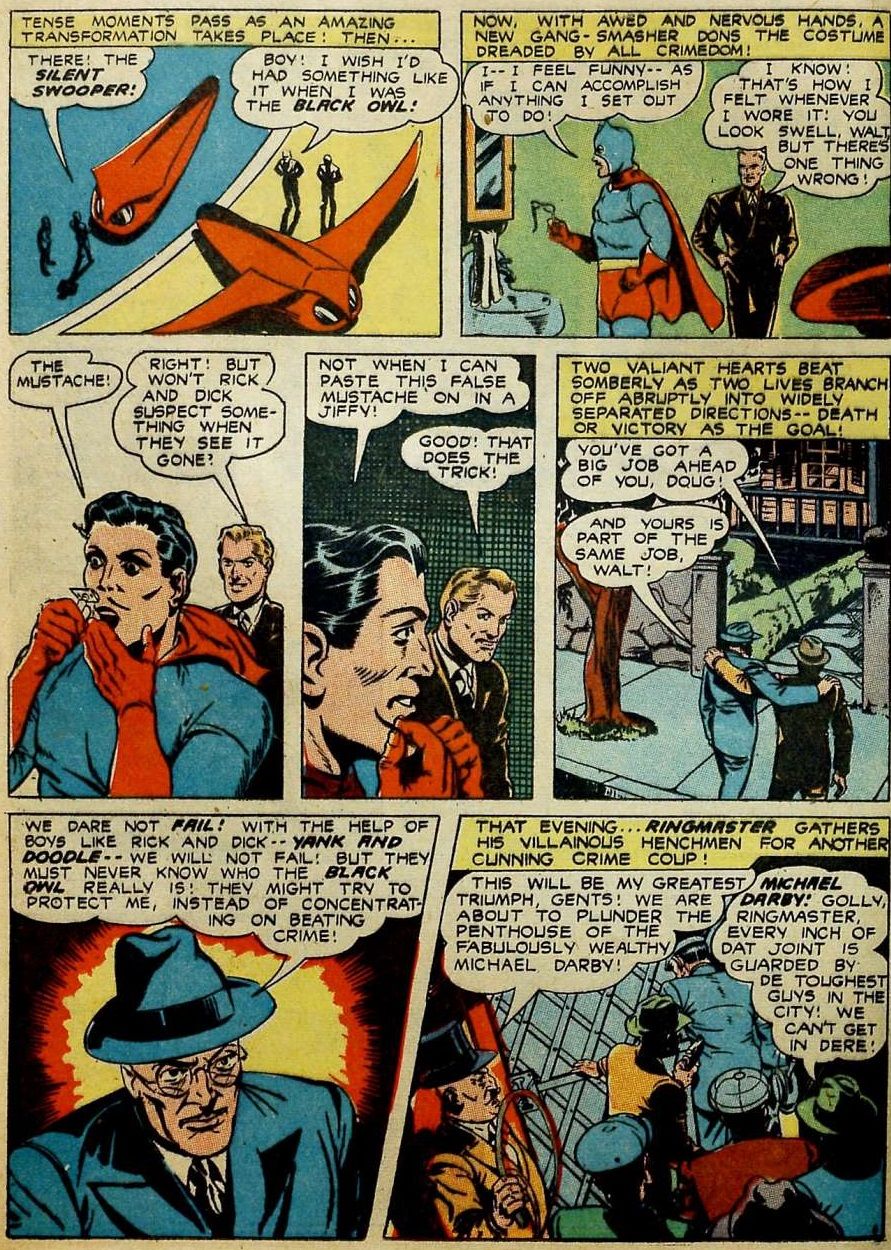Today, we discover who was the first superhero to take over the identity of another superhero.
In "When We First Met", we spotlight the various characters, phrases, objects or events that eventually became notable parts of comic lore, like the first time someone said, "Avengers Assemble!" or the first appearance of Batman's giant penny or the first appearance of Alfred Pennyworth or the first time Spider-Man's face was shown half-Spidey/half-Peter. Stuff like that.
My buddy Fraser asked me about this topic in an amusing way, which is sometimes something that I confuse myself with, as well, which was to ask where my article was on this topic, as he assumed that I had written one about this topic, but he couldn't find it. As it turned out, I had not yet written one about it, but, well, here we are now!
Ever since Julius Schwartz decided to introduce new versions of Flash and Green Lantern to help kickstart the Silver Age of Comics, legacy superheroes have been a big part of our comic book reading life. In recent years, legacy superheroes have taken on an even greater life, with Marvel literally having a "Legacy" series of books spotlighting how many legacy superheroes there are based on its classic group of superheroes (like Miles Morales becoming Spider-Man in honor of Peter Parker, or Sam Wilson also becoming Captain America, or Jane Foster also becoming Thor, stuff like that). This is famously something that is associated with the Barry Allen Flash and the Hal Jordan Green Lantern, but did it really start with those two (Fraser's best guess is that it did)? Let's find out!
WHAT DO WE MEAN BY "LEGACY SUPERHEROES," ANYWAYS?
When he asked the question, Fraser noted that there was obviously a little confusion as to what the term even means, which would give us two very different answers depending on how we use it. One way to look at the term is to say that a "legacy" superhero is one who becomes a superhero in honor of an earlier superhero. For instance, is Ms. Marvel a legacy superhero of Captain Marvel, because she was inspired to become a superhero by her? Or does it literally have to be a case where you take on the specific identity of an earlier superhero (in the case of Ms. Marvel, it technically works both ways since Kamala Khan took on Captain Marvel's EARLIER superhero identity, Ms. Marvel).
If we go by the "inspiration" angle, then the answer seems to be clear, and it's one of the most historic comic book stories of all-time, the introduction of the Hangman!
You see, in 1939, MLJ Comics (a comic book company formed by the first initial in the names of its founding partners, Morris Coyne, Louis Silberkleit and John Goldwater. The company later changes its name to Archie Comics after its most famous character, Archie Andrews, but that wouldn't be for a few years) introduced its main superhero anthology series, Pep Comics, which starred the Shield, the first patriotic-themed superhero (he was such a notable character that when Captain America debuted a year later, MLJ threatend to sue Timely Comics over the fact that Captain America's shield was clearly based on the Shield's chest emblem. That's how Captain America came to have a round shield). The second feature in the comic was a high-powered superhero created by Jack Cole called The Comet...

Known for his distinctive visor, the Comet's energy powers also led to him becoming one of the deadliest superheroes of the Golden Age, s that dude would just disintegrate bad guys seemingly willy nilly.
In any event, the Comet continued as a regular feature in Pep Comics, but didn't hit big like the other MLJ heroes of the era, like the Shield and the Wizard, and so in 1941, MLJ's managing editor, Harry Shorten, came up with a bold idea that was implemented in Pep Comics #17.
First, college student Bob Dickering discovered that his brother, John, was the mysterious Comet...

Then, Bob is kidnapped (to try to force John to not testify against a mob boss) and the Comet goes to save his brother and is SHOT!

And then, in an absolutely stunning turn of events, the Comet DIES!!!

Bob does the only thing that a college student whose brother was just murdered could possibly do, he becomes a superher of his own, called the Hangman!

While the Hangman didn't exactly become the sensational new character find of 1941, he DID do a lot better than the Comet, overall. So, the question is, does Hangman count as a "legacy superhero" since he became the Hangman to effectively replace his brother? I think you can make an argument for it, but really, I think we all know the term "legacy superhero" as generally a term of art referring to a superhero who literally used the same identity as an earlier superhero, so I am going to say "no" here.
OKAY, SO WHO WAS THE FIRST "LEGACY" SUPERHERO, THEN?
The anwer took place a couple of years after the Hangman's debut (the Hangman's debut was so early in the Golden Age that it is the answer to a number of comic book firsts, like the first superhero to be killed).
First, let's quickly rule out the second Manhunter, Dan Richards, who debuted in Police Comics #8 (by Tex Blaisdell and Alex Kotzky), as he was a Quality Comics character and the first Manhunter, Paul Kirk, was a DC character, so obviously there was no direct connection.
The answer, instead, is the obscure superhero, the Black Owl, one of the many (MANY) Shadow knockoffs from the era, who debuted in 1940's Prize Comics #2 (by Pete Riss and Jack Binder and I have no idea who wrote it)...

The Black Owl's real name was Doug Danville. He soon adopted a more traditional superhero costume (it was funny how quickly people went from emulating the Shadow to emulating more traditional costumed superheroes).
In Prize Comics #13, Paul Norris introduced the patriotic-themed twin superheroes, Yank and Doodle...

In 1943's Prize Comics #34, the size of the comic shrank and in a clever move (in a story drawn by Dan Zolnerowich), the Black Owl feature merged with Yank and Doodle, and as part of that merger, Yank and Doodle's dad, Walt Walters, realized that his kids were superheroes...

just in time for his old buddy, Doug Danville, to ask for Walt to take over as the new Black Owl, as Doug was entering the military!

So Walt Walters took over as Black Owl, and partnered with his sons (who wouldn't learn his secret identity for YEARS).

And that, I believe, is the first legacy superhero.
Thanks for the question, Fraser! If anyone else wants to know about an interesting comic book first, just drop me a line at [email protected]!


